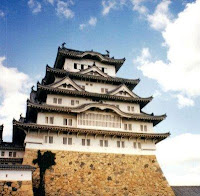Buddhist civilization 'Temples of Muarojambi', the forgotten Archaeological site
 Buddha enshrinement site in the village of Muarojambi, Jambi Province, were deserted from a variety of activities, with an area of about 12 square kilometers - is the largest archaelogical sites in Indonesia - more than 80-100 temples and menapo (mound relics of sculptures and statues of the ancient Malay, the Srivijayan Kingdom).
Buddha enshrinement site in the village of Muarojambi, Jambi Province, were deserted from a variety of activities, with an area of about 12 square kilometers - is the largest archaelogical sites in Indonesia - more than 80-100 temples and menapo (mound relics of sculptures and statues of the ancient Malay, the Srivijayan Kingdom). Until now that has been occupied and restored only about 10 percent, the temple complex of Astano Temple, High Temple, Gumpung Temple, Twins Stone Temple, Gedong I and II Temple, Kedaton Temple, Kotomahligai Temple, Menapo High Temple, Menapo Sialang, and Talago Rajo, people who live in the area of the site is very concerned with objects of cultural heritage sites so that the damage is almost never happened.
There are still many buildings of the temple which identified approximately 110 buildings of the temple made of brick structure consisting of 39 groups of relics of the temple until the Malay and Srivijaya Kingdom, Malay Buddhist cultural backgrounds with a 7.5 kilometer long area, standing so many temples along the banks of streams Batanghari River.
 Muarojambi site located at an altitude of 14 meters above sea level and situated in a plain area which is an area of natural levee of the Batanghari River, at some point on the edge of the river there is ancient canals or artificial river that connects it with the temple area sites.
Muarojambi site located at an altitude of 14 meters above sea level and situated in a plain area which is an area of natural levee of the Batanghari River, at some point on the edge of the river there is ancient canals or artificial river that connects it with the temple area sites. Through the ancient canal that encircled the area site in the past a row of buildings of the temple complex location can be achieved. A total of seven buildings of the temple is in the process of intensive conservation while others are still in ruins of ancient buildings are covered with primary and secondary forest vegetation, and land in local peoples fields.
Local governments have been working hard to do the restoration, according to Tonny Mambo, Head of the Preservation of Archaeological Heritage (BP3) Jambi, attention to these ancient sites have been started by Captain SC Crooke, British officers in 1820 and one hundred years later by Adam who concluded the Muarojambi sites is a capital city with buildings made of stone bricks.
 Site enshrinement Muarojambi alleged to have existed since the mid-seventh century AD that is used as a religious site built community groups in the Mahayana Buddhists around the eighth century AD and continued until the 14 century in the Batanghari River basin under the control of the Kingdom of Srivijaya.
Site enshrinement Muarojambi alleged to have existed since the mid-seventh century AD that is used as a religious site built community groups in the Mahayana Buddhists around the eighth century AD and continued until the 14 century in the Batanghari River basin under the control of the Kingdom of Srivijaya. The uniqueness is found in the temple complex is a group of brick buildings clustered in a place surrounded by walls encircling wall, the remaining settlements 7-13 centuries AD, the calender site indicators, ancient script found in the ruins of the Gumpung Temple, ancient script on Bronze Gong in Chinese characters, fragments of Buddha statues, the Prajnaparamitha statues in the Gumpung Temple, and shards of ancient pottery.
Attention should be given to the enshrinement Muarojambi complex so as not getting forgotten, the government of Indonesia will propose the area be known Muarojambi Buddha enshrinement in various countries through various activities and publications. Seeking attention in order to become one of UNESCO's world cultural heritage site. Hopefully.
-------------------------------------------------------------
(Source Kompas /Images CC)


Comments
Post a Comment